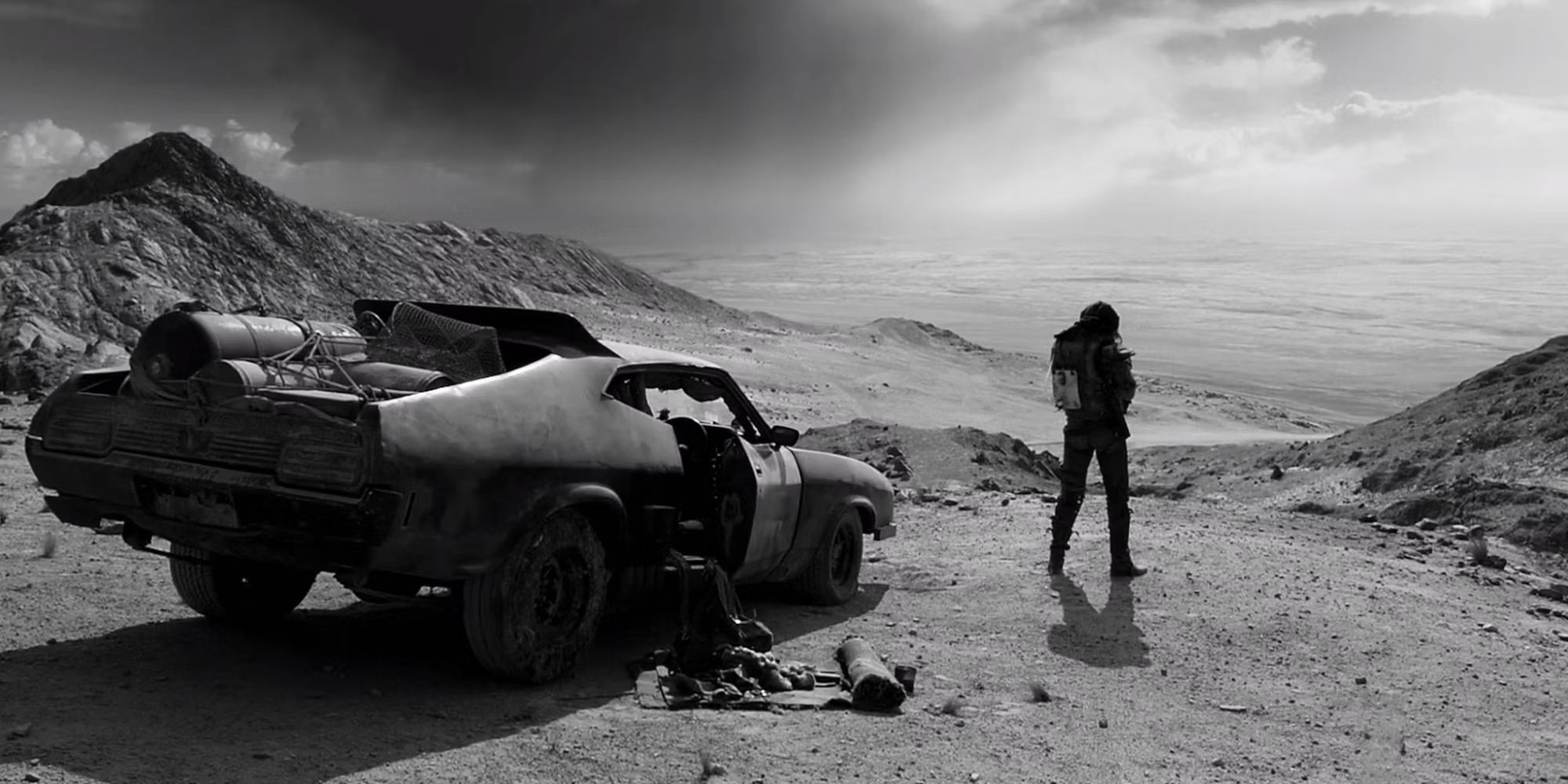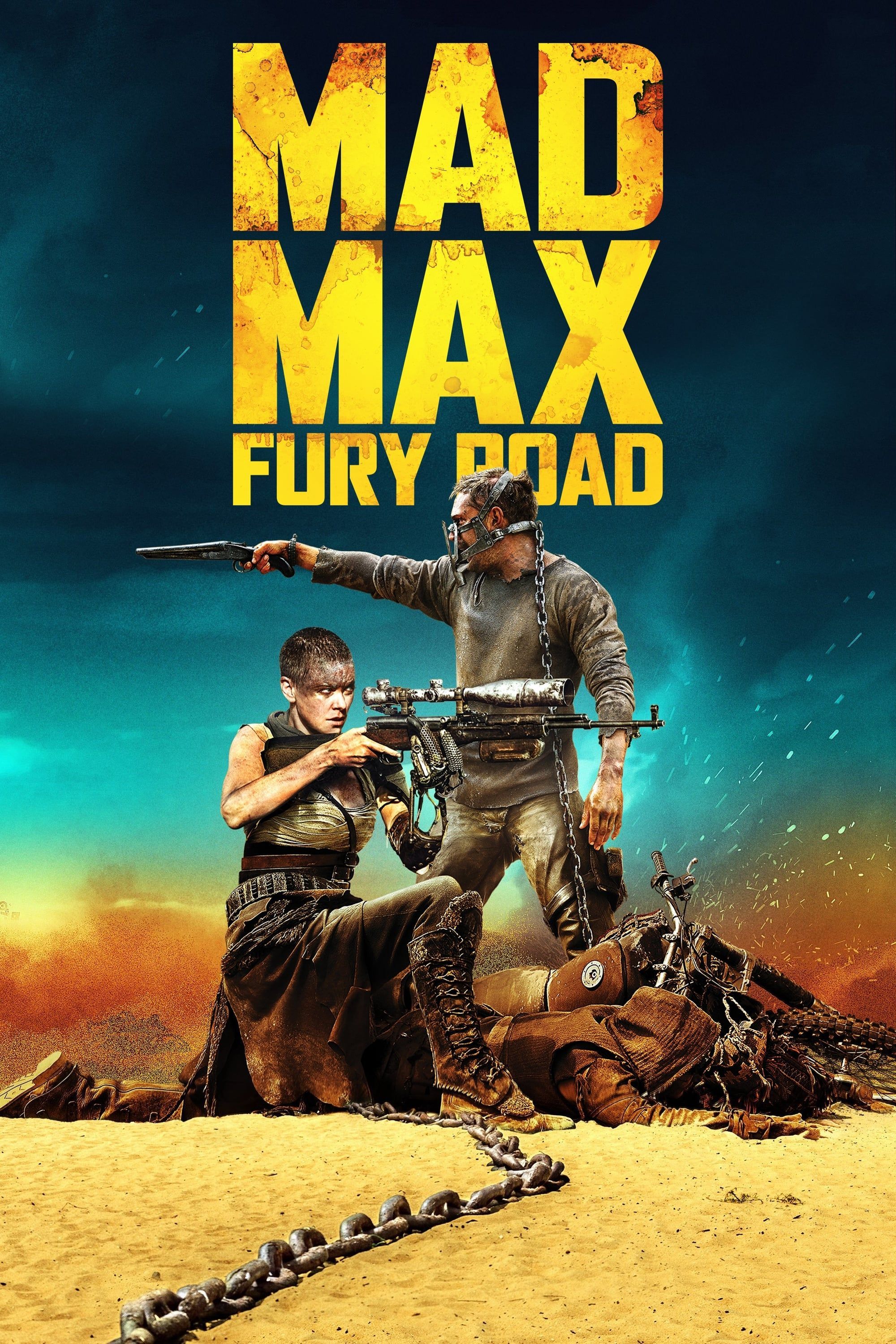The Big Picture
- George Miller's decision to release a black and white version of Mad Max: Fury Road changed the nature of the film entirely.
- Removing color intensity in Fury Road showcases craft elements and actors' performances, making it more iconic, but less effective.
- Black and white versions of modern films present an interesting experiment, with some exceeding the original versions but others feeling robbed of something.
Black and white images are the original language of film. For decades, as filmmaking was a developing art form, the only option was black and white film stock. When color came around, films were still made in black and white for years before it fell out of practice in the 1960s. While there are some movies that use black and white to great effect, last year's Oppenheimer and Poor Things both relied on it for portions of their stories, it is far less common for a major motion picture to be entirely in black and white. But in the mid-2010s, a trend began of re-releasing recent blockbusters in sleek black and white editions, some just as a DVD feature, others theatrically. An ironic twist on the controversial practice of colorizing black and white movies, spearheaded by the twisted mind of George Miller with the release of Mad Max: Fury Road Black and Chrome Edition.
Why George Miller Released 'Fury Road' in Black and White
The idea came to Miller when he saw The Road Warrior (Mad Max II) in black and white during the scoring process. As was the practice at the time, composers and sound designers were given cheap black and white duplicates of the original prints to work off of before translating their work to the master (comparable to being issued a low resolution version of a work-in-progress movie with a watermark today.) Miller was blown away by how his film looked, saying "It just reduces it to this really gutsy high-[contrast] black and white, very, very powerful." Miller also liked how it hearkened back to the original cinematic language of black and white imagery and how action films are something so unique to the medium. "You're trying to use a language that cannot exist in any other medium. You cannot do it in the theatre, you can't do it live" said Miller. While The Road Warrior was released in color, he would recall this idea when he returned to Mad Max in the 2010s.
Miller told SlashFilm when coloring Fury Road he noticed most films set in post-apocalyptic worlds were desaturated. That's in part why he and colorist Eric Whipp decided to go hyper intense on the colors for the film, to stand out above the crowd. Miller would go on to say, "it can get really tiring watching this dull, de-saturated color, unless you go all the way out and make it black and white." It was here Miller stated his preferred version, "the best version," is the one without color. Conscious of the bias against black and white for anything other than prestige films, Fury Road would be released in color. But with critical praise beyond imagination and a surprise Oscar campaign, Mad Max: Fury Road became a prestige picture in its own right.
In 2017, two years after the film's initial release, the Black and Chrome edition was announced and debuted in features and on home video. Though this version was made without the involvement of cinematographer John Seale, he gave it his blessing, feeling that removing the color brought an intensity to other craft elements of the film and the actors' performances. Finally seeing his vision realized, Miller felt the black and white changed the nature of the film entirely and that “losing some of the information of colour [sic] makes it somehow more iconic.” Seven years later and with the prequel film Furiosa: A Mad Max Saga on the horizon, does Miller's choice hold up?
The Black and White Robs ‘Fury Road’ of Its Spectacle
Far be it from a random dude writing for Collider to suggest they know more than a "God" (according to Hideo Kojima), but having just viewed the Black and Chrome edition for the first time, this dude longed for the color. While the 80-something auteur might cite a generational bias against the classical filmmaking technique, his initial decision to hyper intensify the color is a more fitting one for Mad Max: Fury Road. The film is extreme in every sense of the production, from the incredibly fast-paced editing, to the all-encompassing sound design, and the grand-scale operatic images. Why take away any part of that?
The color palette is a huge contributing factor to the film. Miller uses gorgeous oranges and blues to capture the desert at both night and day, and the detail from the rust-covered cars to the fire of the flamethrower guitar only benefits from the contrast against the backgrounds. Not to mention, in a film about returning to "the green place," it takes away the power of seeing the green hidden away by the tyrannical Immortan Joe or the water to be released at the film's final moments. It's strange to remove a key component of a film designed to be maximalist at every level.
This is not to say Black and Chrome is a complete failure. It remains an interesting experiment that does produce some fanciful images. Perhaps if it were released first in black and white, or if the film had been designed from the beginning to be black and white, the colorless version might be more effective. Some of the shots do look great in the high contrast that stand out individually from the film on the whole. But in a film that takes place in such a bright landscape, the audience is left longing for the rich colors Miller, Seale, and Whipp put so much effort into. It also robs some of the work that costume designer Jennie Beaven and production designers Colin Gibson and Lisa Thompson put in to building the world of Fury Road (for which they won Oscars).

One of George Miller’s Best Movies Couldn’t Be Further From the Mad Max Films
"Well, I have to warn you, I may be small, but I can be ferocious if provoked."
Does Black and White Work With Modern Movies?
Mad Max: Fury Road may have simply been a fun experiment for George Miller, but it was at the forefront of the trend in the industry. After Black and Chrome, Logan was announced to be re-released in black and white with the title Logan Noir. After Parasite became a surprise hit, it too received the color zapping treatment. Zack Snyder, along with his completed Justice League, released the Justice is Gray edition. Guillermo Del Toro released a "Light and Shadows" version of Nightmare Alley just a few weeks after its initial release. And most recently, Godzilla Minus One paid homage to its origins with the appropriately titled Godzilla Minus One Minus Color.
Some of these have worked better than others. Nightmare Alley and Godzilla Minus One, both recapturing a retro era of film, look spectacular in black and white, arguably surpassing the original versions. But like with Fury Road, some of these films feel robbed of something in the translation. However, black and white is still a viable form of expression. Plenty of prestige films have employed it beautifully in recent years. Roma's black and white images evoke one of cinema's most famous memoirs, 8 1/2, Nebraska's black and white enhances the dry comedy, and Mank's use of black and white situates it perfectly in the time period in which it takes place. Black and white can still maintain an audience, but it's better if that was a decision made before the film was shot, not after.
Mad Max: Fury Road is available to stream in color and black and white on Max in the U.S.






